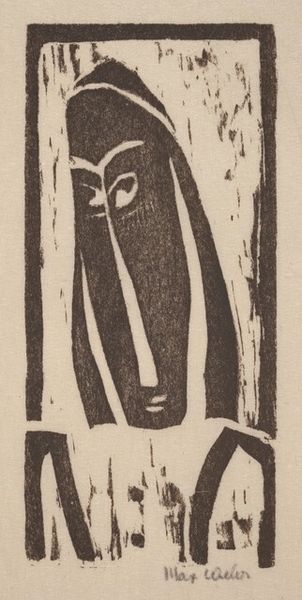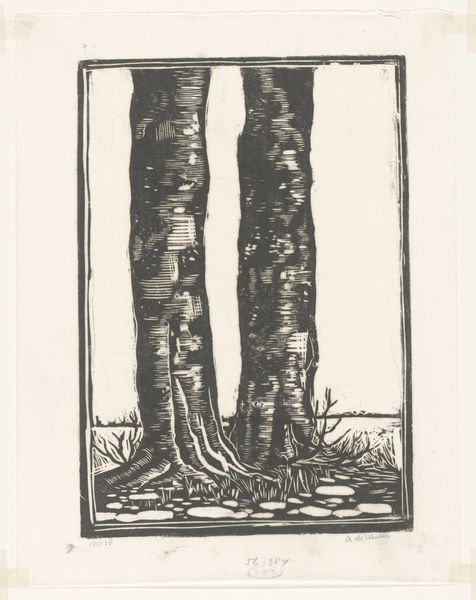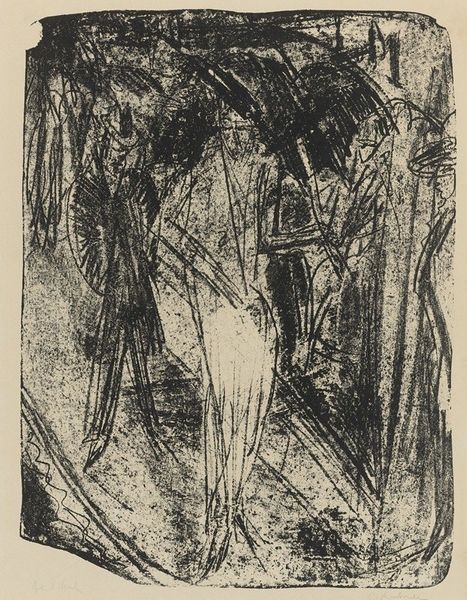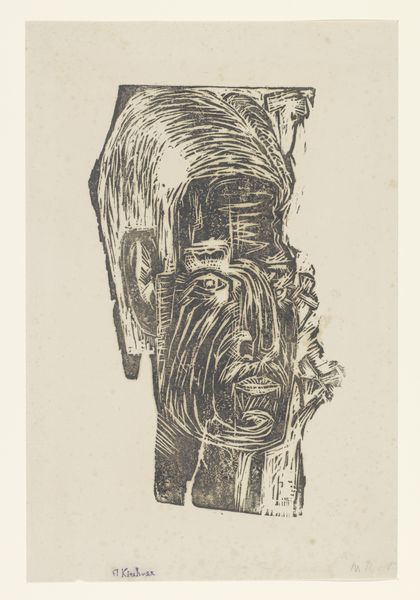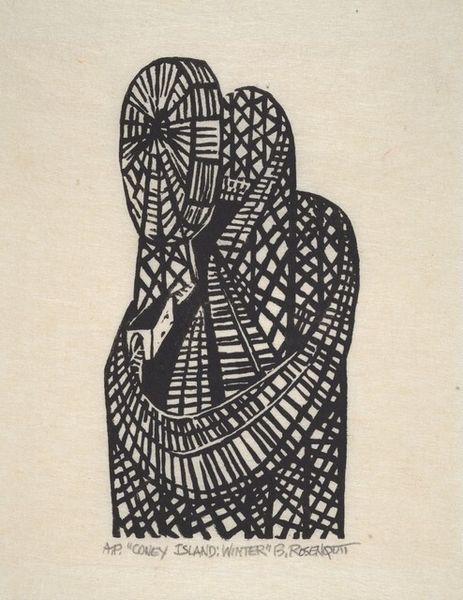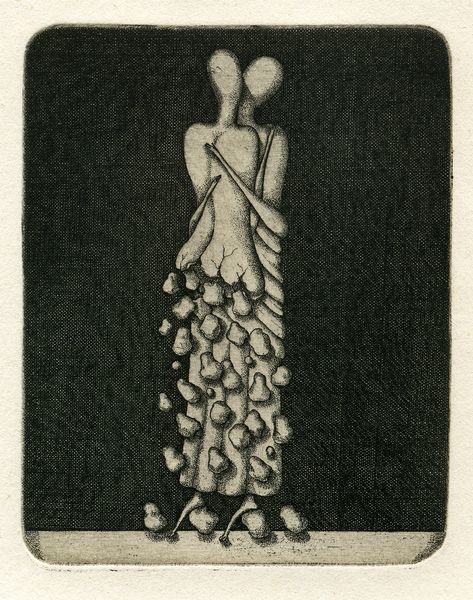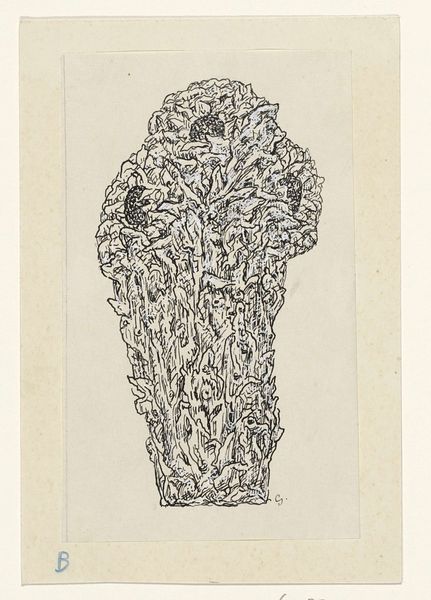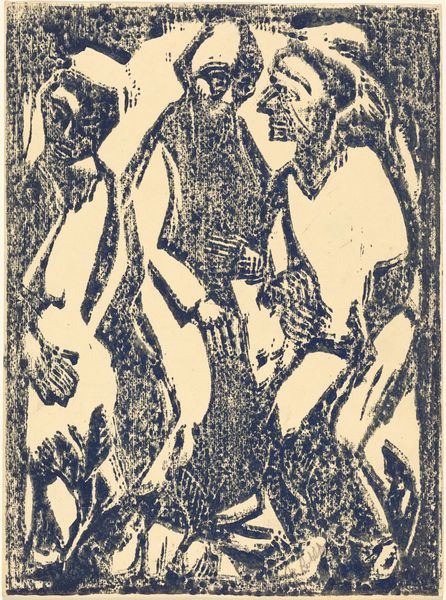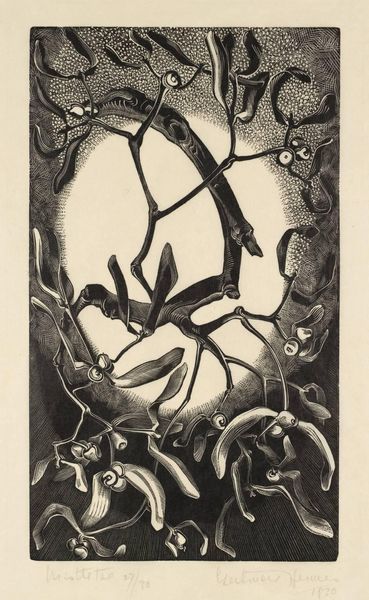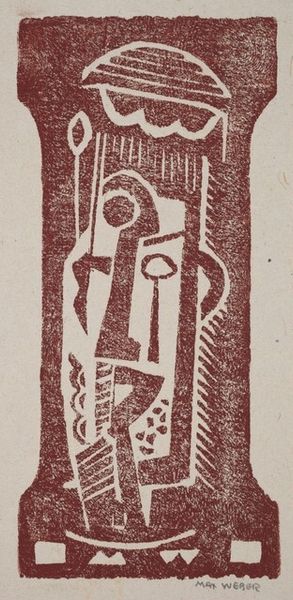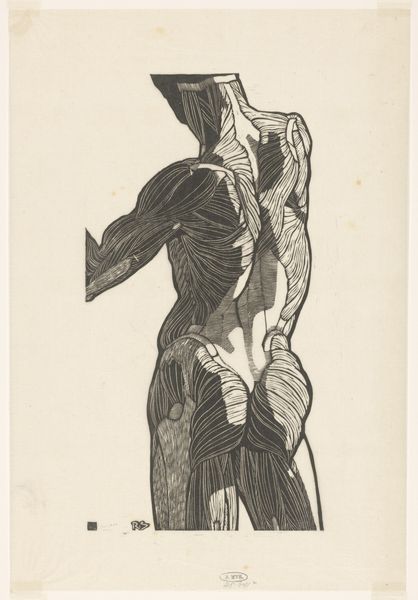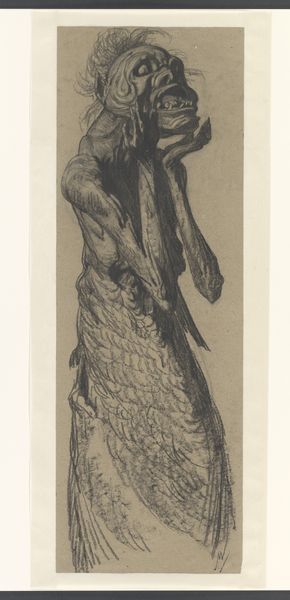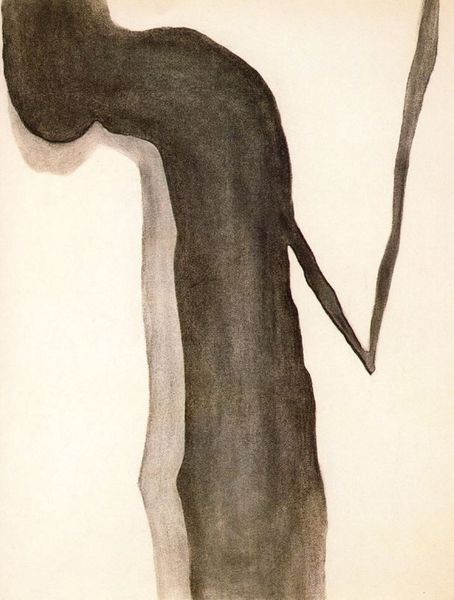
Dimensions: height 153 mm, width 85 mm
Copyright: Rijks Museum: Open Domain
Curator: This pen and ink drawing by Leo Gestel, titled "Geweer met een helm erop in een veld," which translates to "Rifle with a Helmet in a Field," dates from between 1934 and 1936. Editor: Stark. Immediately, I see this forceful verticality emphasized by the rigid rifle. And then the ground... a chaotic nest of scratches suggesting turmoil. Curator: Gestel made this work during a volatile interwar period, and that unease really permeates it. His personal experiences, anxieties about the rise of fascism and the looming threat of another global conflict heavily shaped his artistic vision. This piece serves as a powerful commentary on the dehumanizing effect of war. Editor: The helmet, perched atop the rifle—almost like a macabre finial—is fascinating. The artist employs dense, almost frantic hatching to give it volume, while the rifle itself is a solid dark line that demands our attention. Is that juxtaposition intentionally unsettling, a weight pinning the landscape? Curator: I believe so. The rifle transcends being a mere weapon. The landscape is composed of repeated short strokes, giving the sense of desolation through that chaotic mark-making, echoing the broader societal angst regarding militarization. It acts as a stand-in for absent soldiers, lost lives. This representation certainly evokes broader conversations of remembrance, memorials. Editor: Yes, and look at how the expressionistic linework conveys not only physical ruin but psychological trauma, wouldn't you agree? This intense focus of materials creates that mood. Curator: Gestel, deeply concerned with the rising fascist sentiments of the time, employs these wartime vestiges—a helmet and rifle—as motifs for exploring sociopolitical ideas, inviting viewers to reflect on a civilization grappling with instability and fear. The setting in which Gestel situated these central war symbols creates a setting ripe for exploring trauma and questioning prevalent notions of militarism. Editor: Indeed, and perhaps the genius lies in its restraint. Such simple means—pen, ink, paper—conjuring so much dread and leaving an aftertaste. Curator: Precisely. Gestel used potent symbolism that is a powerful representation of his period and offers us valuable insight into its political sentiment. Editor: The somber scene compels contemplation. This little ink drawing leaves one considering just how much impact can come from a careful observation.
Comments
No comments
Be the first to comment and join the conversation on the ultimate creative platform.
